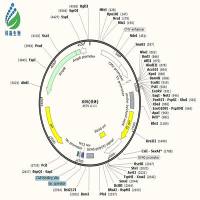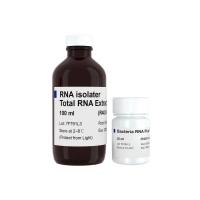Transformation Of Bacteria By Heat Shock
互联网
1187
E.coli can be transformed using calcium, electroporation (best efficiency) or heat-shock. Competent cells for heat-shock based transformation can be easily prepared in the lab using PEG (polyethylene glycol), etc. (see this and this ), but many get them from commercial vendors (e.g., TOP10 cells from Invitrogen and XL Blue cells from Stratagene).
Handling competent cells
Competent cells are very sensitive to temperature changes and mechanical stresses including those caused by pipetting. They should be thawed on ice and any mixing should be done by swirling and gentle tapping.
Transformation
Most ''chemical'' competent cells can be transformed using this 42 deg. heat shock method. For highest possible transformation efficiency (not required in most cases) follow manufacturer''s guidelines.
1. Thaw one vial (or more) of cells (50 ul volume) on ice. The cells are stored in the -80 fridge. Depending on other parameters (nature of ligation, selection criteria for clones, etc.), a smaller volume (down to 15 ul) may be used. You can aliquot volumes into regular 0.5 or 1.5 ml eppendorf tubes and use those tubes.
2. Add 1-5 ul of ligation reaction (up to 10-15% of volume of cells) or plasmid DNA (10-50 pg) and mix by using tip of the pipette tip.
3. Incubate on ice for 15-30 min.
4. Heat shock for exactly 30 secs at exactly 42 deg. You can use a thermocycler, a water bath or a small beaker filled with water at the right temperature.
5. Place on ice for 0.5-1 minute.
6. Add 250 ul (for 50 ul bacteria) of SOC medium (commercial source) that has been prewarmed to 37 deg (not necessary).
7. Shake at about 225 rpm on a horizontal shaker at 37 deg for 1 hr. Tape the tubes to the shaker in a horizontal position if required.
8. Spread a tenth to all (usually half to all) of the culture on a 10 cm LB agar plate (usually stored in the cold room; different types such as LB with ampicillin or LB with kanamycin may be available).
9. Incubate the plates, inverted (you may have to wait 1-2 hours before inverting if a high volume of culture was plated) at 37 deg overnight.
10. Bacterial colonies are visible after about 12 hours and they can be picked at 15-18 hours. Beyond 20-22 hours, satellite colonies appear.
11. The plates can be stored, after parafilm sealing, at 4 deg. The colonies remain viable for up to a week.









